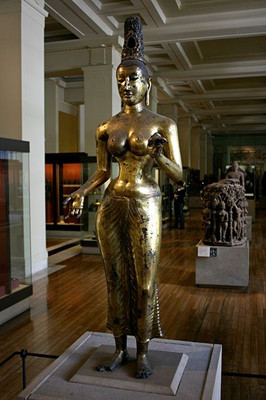(单词翻译:单击)
Nira Wickramasinghe, professor in history and international relations, spoke to us about what this long-established pattern means for the region today:
荷兰莱顿大学从事历史与国际关系研究的尼拉维克拉马辛格教授为我们阐释了历史上这种持久的关系模式对当今该地区形势的影响:
"I think in many ways you can speak of a south Indian/Sri Lankan region with many points in common, culturally and politically as well. There has also been a two-way flow of influences in art, religion, technology. Of course it has not always been a peaceful relationship; there have also been invasions and wars between southern states and chiefdoms in Sri Lanka.
印度南部与斯里兰卡地区在文化、政治等诸多方面都相通,而艺术、宗教与技术上的影响也一直是双向的。当然,它们的关系并非一直是和平的,历史上印度南方各邦与斯里兰卡诸酋邦之间的侵略和战争也时有发生。
"It's really trade that brought people from India to Sri Lanka. You have certain communities which are really fairly recent migrants from south India, so they would have come in the ninth to thirteenth centuries. In fact, they merged their south Indian identity with a more Sri Lankan identity, and what is curious now is that many of these are the most ardent Sinhala nationalists. I mean if you look at their roots, their roots are very much in south India."
是贸易吸引人从印度去往斯里兰卡。斯里兰卡有许多社区是在9世纪至13世纪之间由印度南方的新移民所建。他们慢慢地让自己的南印度身份与斯里兰卡身份相融合,并且更认同后者。有意思的是,这些人的后裔如今反而成了最激进的僧伽罗民族主义者。
And so it goes on, 1,200 years later, the complex working-out of the relationships that we see embodied in Tara, between Sinhalese and Tamil, between Sri Lanka and south India, between Buddhists and Hindus. Relationships that in Sri Lanka have tragically included the recent long and bloody civil war.
这种错综复杂的关系早在度母形象上便有所呈现,僧伽罗人与泰米尔人、 斯里兰卡与印度南部、佛教徒与印度教徒,彼此间的影响在1200年后的今天依然延续。悲剧的是,在斯里兰卡,这一关系也导致了现代历时甚久的血腥内战。
But Tara may in fact have survived thanks to earlier warfare. Marks on the surface of the sculpture suggest that she was buried at some point, perhaps to avoid her being looted by invaders and then melted down.
但这尊度母雕像的幸存也多亏了战争。佛像表面的痕迹说明它曾被埋在地下,也许就是为了躲过人侵者的洗劫、逃脱被重铸的下场。



